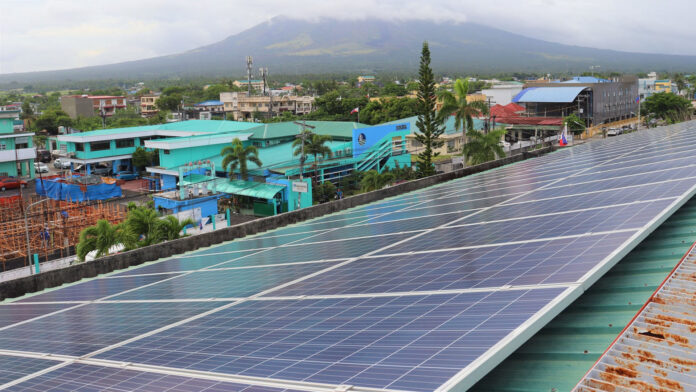The administration of Ferdinand R. Marcos Jr. will continue to pursue measures and policies to ensure the availability of cheap and reliable energy through the promotion and utilization of renewable energy (RE) sources.
This was the promise made by the Department of Energy (DOE) in its yearend report which identified major plans for 2023 including updating the Philippine Energy Plan, pursuing contingency measures and activities to ensure energy supply during critical periods, and pushing for the continued development of alternative fuel and improving access to electricity.
Marcos, in his first State of the Nation Address (SONA), said energy will be a “key sector” in the administration’s push for economic growth and increased employment.
He said the country is searching for new power sources while improving the mix of the energy supply between traditional and renewable sources.
As part of these efforts, the DOE, in collaboration with the Energy Regulatory Commission (ERC), is set to develop policy and framework for new and emerging renewable energy (RE) technologies.
“These include offshore wind, waste-to-energy, expanded rooftop solar program as well as ocean and tidal stream energy,” the DOE said in a news release on Sunday.
The DOE said the Marcos administration has increased investments in RE projects to meet the target of a 35 percent RE share in the country’s power generation mix by 2030 and 50 percent by 2040.
From July 1 to Dec. 14, 2022, the DOE said it has awarded 41 RE service contracts with a potential capacity of 9.2 gigawatts (GW).
Of this number, around 6.2 GW of equivalent capacity will come from offshore wind (OSW) service contracts.
The DOE also issued 18 Certificates of Award to the winning bidders of the 1st Green Energy Auction Program (GEAP), with an aggregate capacity of 1,866.93 megawatts (MW).
To encourage more investors to develop and utilize RE, the DOE increased the annual percentage of Renewable Portfolio Standards for on-grid areas from 1 percent to 2.52 percent beginning 2023 and started preferential dispatch of all RE-generating units in the Wholesale Electricity Spot Market (WESM).
In November last year, the DOE also allowed 100 percent foreign capital in RE projects by amending the implementing rules and regulations (IRR) of the RE Act that had previously limited foreign ownership of RE projects to 40 percent.
The DOE has also endorsed to the Office of the President the draft Executive Order that would strengthen and rationalize the regulatory framework for the immediate development of the OSW.
Other accomplishments under the DOE include initiating the development of alternative fuels and implementing the government’s Energy Resiliency Compliance Plan.
The DOE launched on Dec. 14 last year the National Energy Contingency Plan (NECP) for “The Big One,” aimed at crafting harmonized multi-sectoral contingency plans and disaster response measures from energy stakeholders.
Together with the National Power Corp. (NPC), the DOE will also undertake its renewable energy development program, including the hybridization of diesel generating facilities, considering that 89 percent of the energy generation and capacity mix in off-grid areas came from oil-based sources.
Marcos, in his SONA, also expressed belief that it is time also to re-examine the country’s strategy towards building nuclear power plants in the Philippines while complying with the International Atomic Energy Agency (IAEA) regulations for nuclear power plants.
The DOE said nuclear power is also an important part of the energy mix that the DOE is eyeing.
It will also update the existing Nuclear Road Map to guide both the Nuclear Energy Program Implementing Organization (NEPIO) and the Nuclear Energy Program Inter-Agency Committee (NEP-IAC) in addressing the challenges of the country’s nuclear energy program. (PNA)
Photo credit: Facebook/DOEgovph


